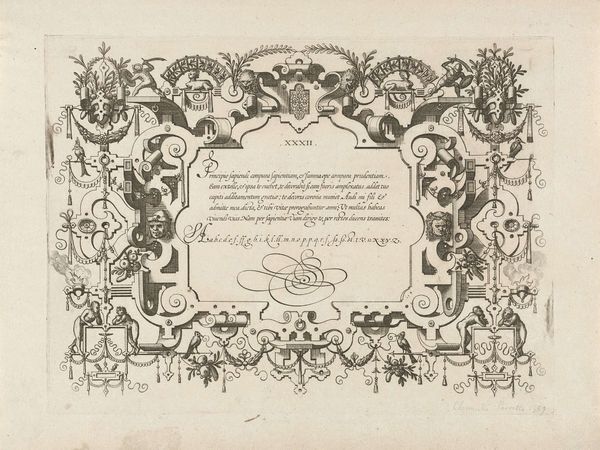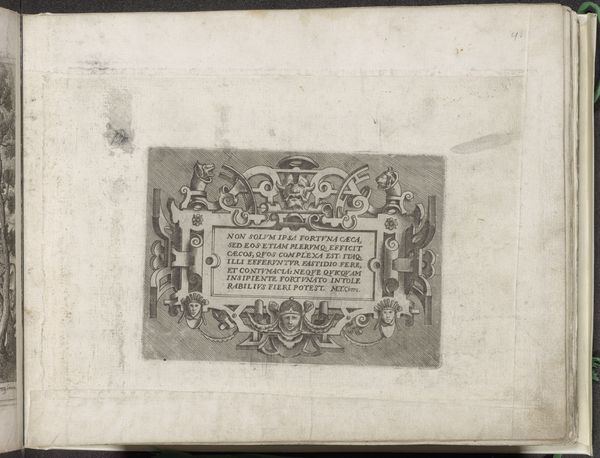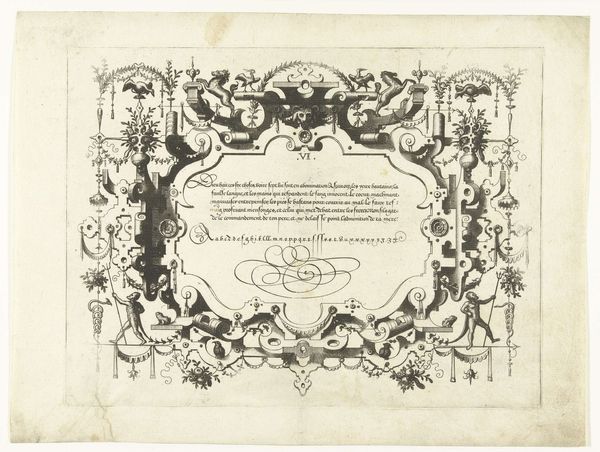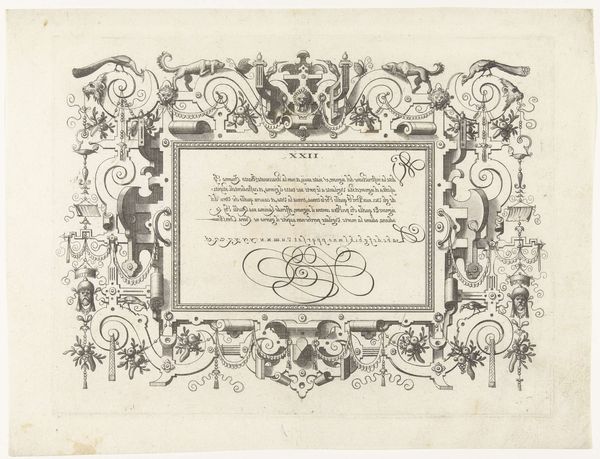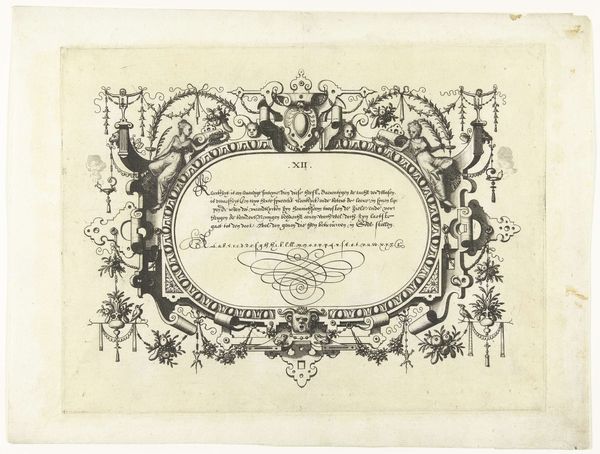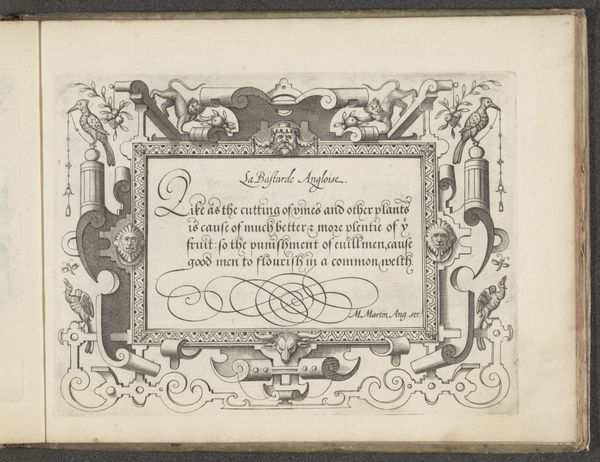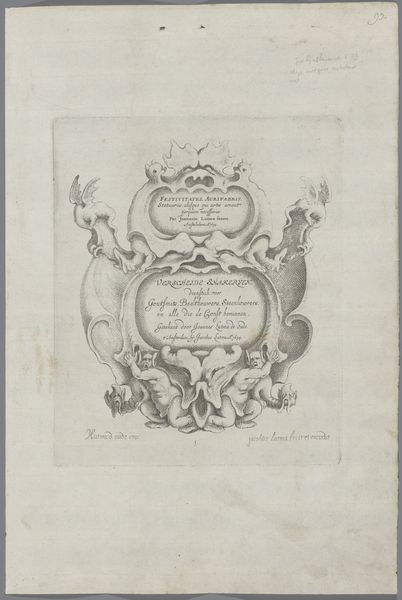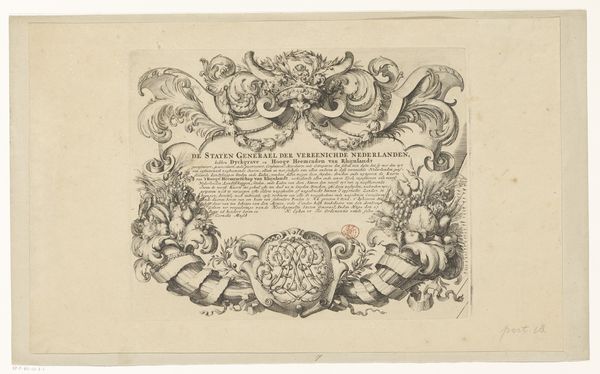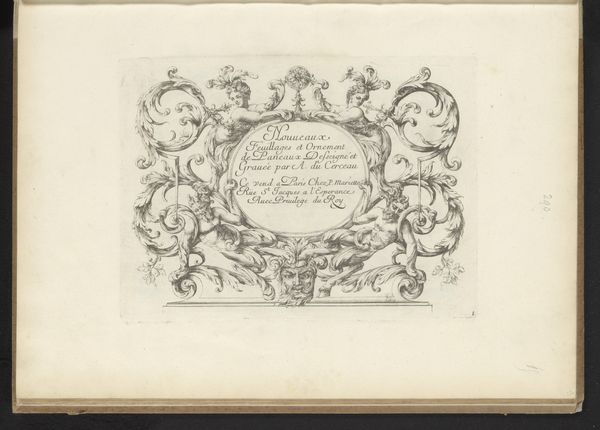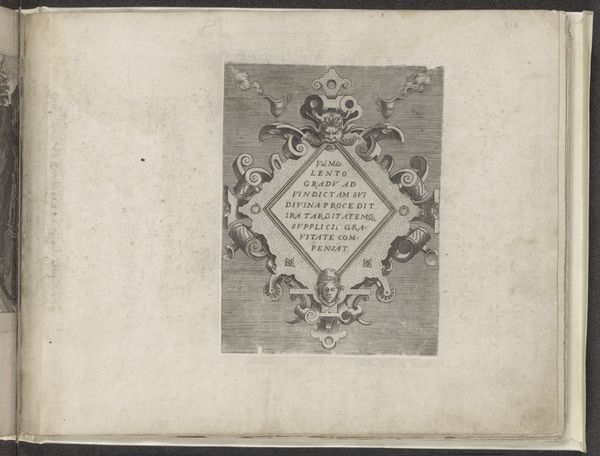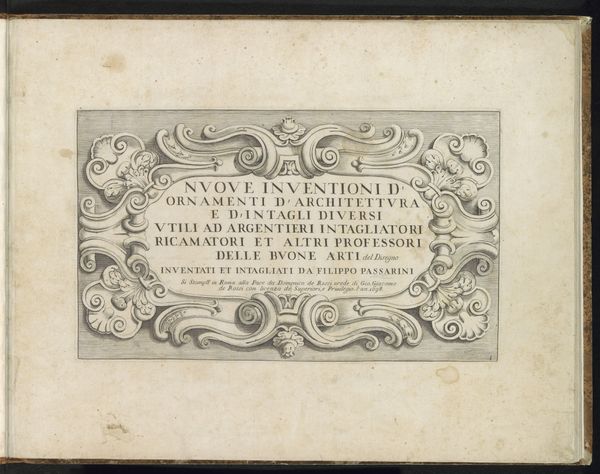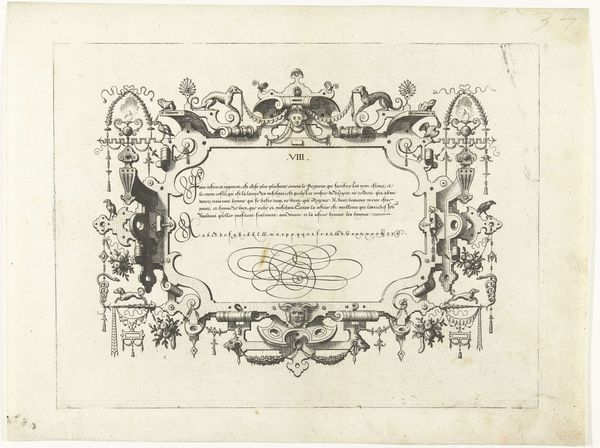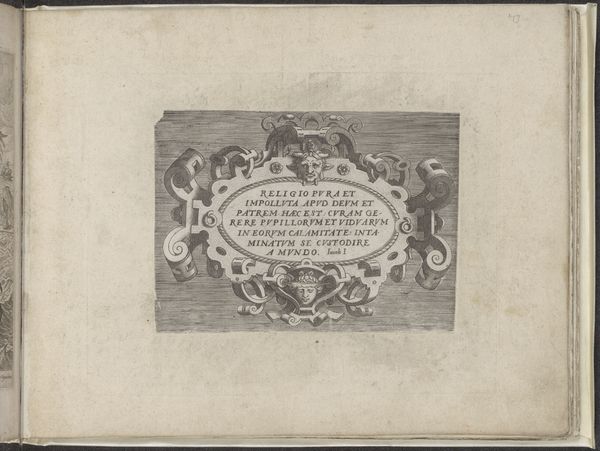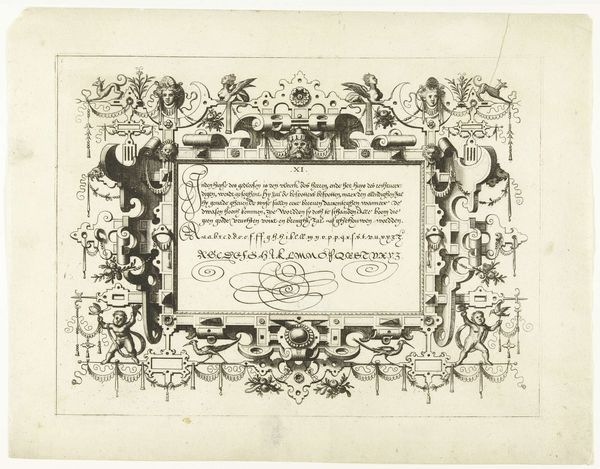
Vorschrifft Teütsch-Lateinisch-und Frantzöischer Schrifften (Examples of German, Latin and French Scripts) 1719
0:00
0:00
drawing, print, typography, ink, engraving
#
drawing
#
baroque
#
pen drawing
# print
#
book
#
old engraving style
#
woodcut effect
#
typography
#
ink
#
geometric
#
line
#
engraving
#
calligraphy
Dimensions: Overall: 7 5/8 x 10 13/16 x 3/8 in. (19.4 x 27.5 x 1 cm)
Copyright: Public Domain
Curator: This is "Vorschrifft Teütsch-Lateinisch- und Frantzöischer Schrifften (Examples of German, Latin and French Scripts)," created in 1719 by Johann Christoph Steinberger. It's an engraving showcasing various script styles. Editor: My initial impression is that it’s surprisingly delicate, almost lace-like, yet with a rigidity in its geometric forms. There's an intricacy that invites close examination. Curator: Absolutely. These examples transcend mere calligraphy. Script wasn’t just about communication then. It was tied to identity and status. Each language reflected distinct social and political spheres, and this print encapsulates that intersection. Editor: The swirling patterns remind me of intertwined destinies, echoing themes common in Baroque art. Birds are featured on all four corners. I wonder about the symbolic significance of these birds, repeated across the engraving. Curator: They could represent freedom of expression, particularly significant given the power dynamics embedded within language itself during that period. The accessibility of these different scripts held considerable power for upwardly mobile merchants and state officials in early modern central Europe. Editor: I see. By making these script styles more widely available, it might suggest both democratic impulse, but it is difficult to not see the geometric lattice structure itself as a powerful symbol. The central positioning of the scripture creates a fascinating push-and-pull between sacred messages and worldly communication. Curator: That tension is essential! It highlights the intersectionality of power. Who gets to read, who gets to write, and in what language—those were all heavily policed questions. Steinberger offers access and also provides this tension between common and exclusive knowledge through scripture, challenging the hierarchy that existed in society. Editor: So, beyond beautiful calligraphy, we see an invitation to question social structures of its time. Fascinating. I definitely perceive something deeply profound from those ornate loops now. Curator: Indeed. Steinberger uses calligraphy as a medium to dissect societal fabrics of the Baroque era, unveiling layered relations that shaped it. The choice to display his scriptures reflects a consciousness of the world that created his place within it.
Comments
No comments
Be the first to comment and join the conversation on the ultimate creative platform.
